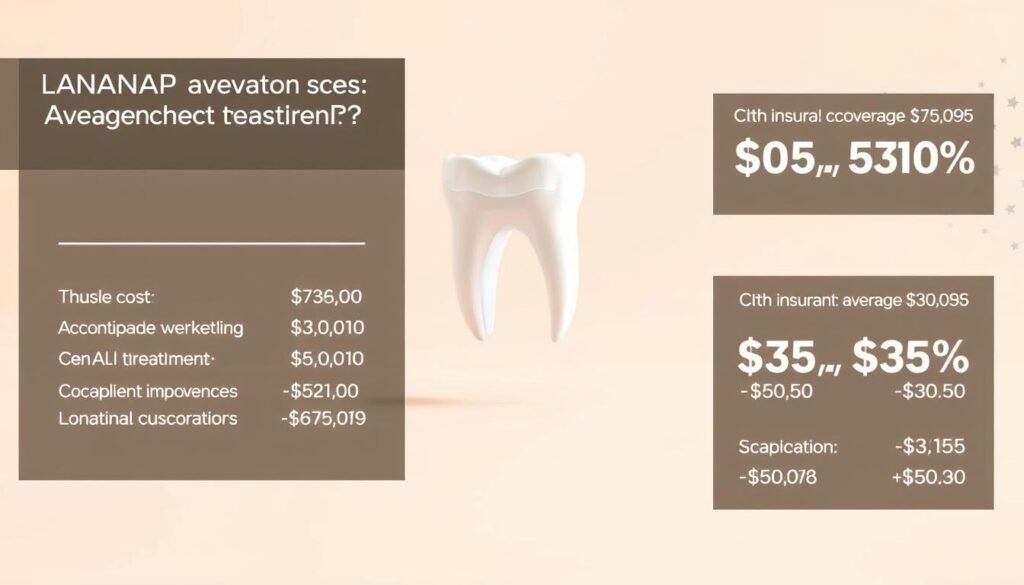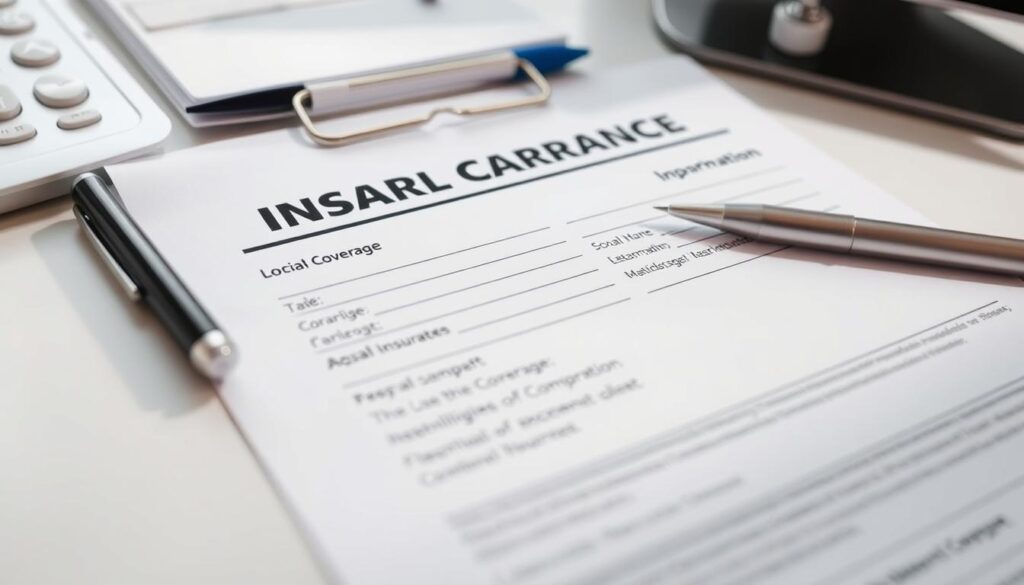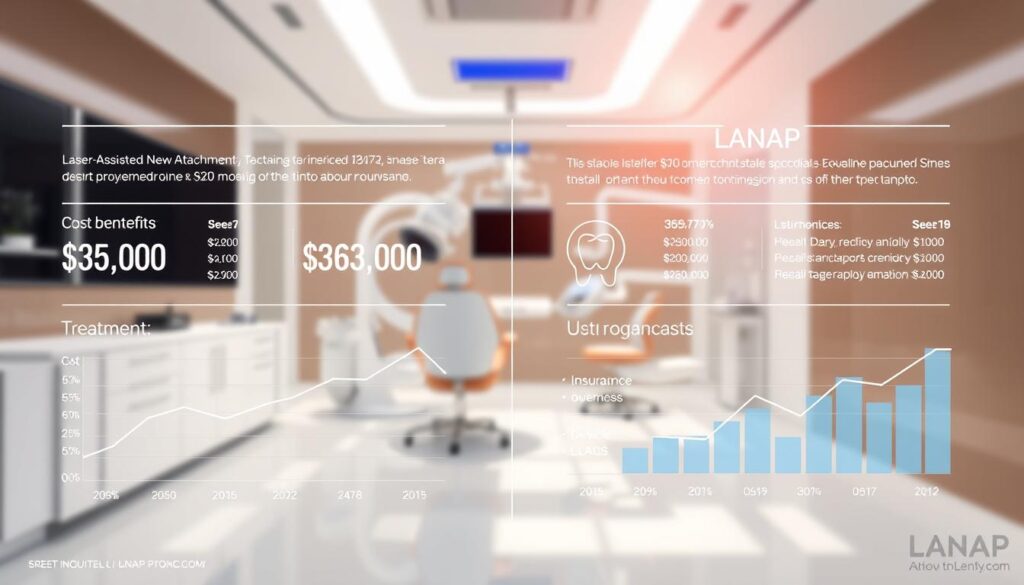Gum disease is a widespread oral health issue affecting millions of adults in the United States. According to the Centers for Disease Control and Prevention, approximately 50% of adults over 30 have some form of gum disease.
For those seeking effective treatment, LANAP (Laser-Assisted New Attachment Procedure) has emerged as a preferred option. As an FDA-approved procedure, LANAP offers a less invasive alternative to traditional gum disease treatment.
Understanding the cost of LANAP and how insurance coverage can impact your out-of-pocket expenses is crucial for making informed decisions about your oral health.
Key Takeaways
- LANAP is an FDA-approved procedure for treating gum disease.
- Insurance coverage can significantly reduce LANAP treatment costs.
- Understanding your insurance benefits is crucial before committing to LANAP.
- Several factors influence the final price of LANAP with insurance coverage.
- Practical guidance is available to maximize insurance benefits and find additional financing options.
- Comparing LANAP costs and benefits to traditional periodontal treatments can help determine its worth.
Understanding LANAP: A Modern Gum Disease Treatment

Laser gum disease treatment, known as LANAP, is gaining popularity due to its effectiveness and reduced recovery time. LANAP, or Laser-Assisted New Attachment Procedure, is a modern approach to treating gum disease without the need for traditional surgical methods.
What is LANAP and How Does it Work?
LANAP is a minimally invasive procedure that uses a specialized laser to target and remove diseased gum tissue, promoting healing and reattachment of the gums to the teeth. This advanced technology allows for precise treatment with minimal discomfort.
The LANAP procedure involves several key steps, including the use of a laser to remove diseased tissue, scaling to remove tartar and plaque, and root planing to smooth the tooth roots. This comprehensive approach helps in restoring the health of the gums and supporting bone.
Benefits of LANAP Over Traditional Gum Surgery
The primary benefit of LANAP is its reduced healing time. Unlike traditional gum surgery, LANAP does not require incisions or stitches, allowing patients to heal much faster. In fact, most patients feel back to normal after just one day.
- LANAP is compared to traditional osseous surgery, highlighting significant differences in approach and patient experience.
- The minimal invasiveness of LANAP eliminates the need for cutting and suturing of gum tissue.
- The recovery time with LANAP is dramatically reduced, typically to just 24 hours, compared to several weeks with traditional surgery.
- LANAP results in less post-operative pain, swelling, and bleeding than conventional periodontal surgery.
- Research has shown that LANAP can stimulate bone regeneration in areas affected by periodontal disease.
- LANAP has a higher acceptance rate among patients with dental anxiety or those who have avoided necessary gum treatment due to fear of traditional surgery.
By choosing LANAP, patients can benefit from a more comfortable and efficient treatment process, making it an attractive option for those seeking to address gum disease effectively.
The Average LANAP Cost with Insurance
The cost of LANAP treatment can be a significant concern for those with periodontal disease, but insurance coverage can greatly alleviate this burden. Most dental insurance providers recognize the importance of LANAP in treating gum disease and offer coverage that can significantly reduce the financial burden on patients.

Typical Price Ranges for LANAP Treatment
LANAP treatment costs can vary based on several factors, including the severity of the periodontal disease and the dentist’s expertise. On average, the cost can range from $1,000 to $3,000 per quadrant. Understanding the typical price range is essential for patients to plan their treatment.
How Insurance Coverage Reduces Out-of-Pocket Expenses
Dental insurance plays a crucial role in making LANAP treatment more affordable. Here are some key points to consider:
- Dental insurance typically categorizes LANAP as a periodontal procedure, with coverage ranging from 50% to 100%.
- The extent of insurance coverage can significantly reduce out-of-pocket costs for LANAP treatment.
- Most insurance providers cover LANAP similarly to traditional periodontal surgery, as both address the same medical condition.
- Annual maximums in dental insurance plans can affect the coverage for LANAP treatment.
- Some insurance providers may require pre-authorization or documentation of medical necessity before approving coverage.
- It’s essential to verify specific coverage details with your insurance provider before proceeding with LANAP treatment.
By understanding your insurance coverage and the average cost of LANAP treatment, you can make an informed decision about your gum disease treatment.
Factors That Influence LANAP Treatment Costs
Understanding the factors that affect LANAP treatment costs can help patients better prepare for their investment in oral health. Several elements come into play when determining the final cost of LANAP treatment.
Severity of Your Gum Disease
The extent of your gum disease is a significant factor in determining LANAP treatment costs. More advanced cases require more complex and potentially longer treatment, which can increase costs. The severity affects not just the treatment duration but also the complexity of the procedures involved.
Dentist’s Experience and Expertise
The experience and expertise of your dentist can also influence the cost. A highly skilled dentist with extensive experience in LANAP procedures may charge more for their services. However, their expertise can lead to more effective treatment and potentially fewer complications.

Geographic Location
Geographic location plays a role in determining LANAP treatment costs. Dental practices in urban areas or regions with a higher cost of living may charge more than those in rural or less expensive areas. This variation is due to differences in operational costs, staffing, and local demand.
Treatment Area and Complexity
The area of the mouth requiring treatment and the complexity of the case are crucial factors. LANAP treatment is often calculated per quadrant, meaning the more quadrants that need treatment, the higher the cost. Complex cases, including those with multiple teeth or significant anatomical challenges, can also increase treatment costs.
- LANAP costs are typically calculated based on the number of quadrants requiring treatment, with more quadrants resulting in higher costs.
- The complexity of each case, including factors like tooth mobility and furcation involvement, affects treatment difficulty and cost.
- Treating just one or two quadrants versus full-mouth therapy impacts the total investment, with full-mouth therapy generally being more expensive.
- Anatomical challenges, such as restricted access or unusual root morphology, can increase treatment complexity and cost.
- The presence of dental implants or prosthetics in the treatment area may affect the approach and pricing.
- Some cases require adjunctive procedures alongside LANAP, adding to the overall treatment cost.
By understanding these factors, patients can better anticipate and prepare for the costs associated with LANAP treatment. It’s essential to consult with a dental professional to get a personalized assessment and cost estimate.
How Dental Insurance Covers LANAP Procedure
Navigating dental insurance coverage for LANAP requires a clear understanding of your insurance plan’s benefits and limitations. To make informed decisions about your periodontal care, it’s essential to comprehend how different insurance plans cover this advanced treatment for gum disease.
Types of Insurance Plans That Cover LANAP
Various dental insurance plans cover the LANAP procedure, but the extent of coverage can vary significantly. Some plans may categorize LANAP as a periodontal treatment, while others might consider it a more advanced or alternative procedure. It’s crucial to review your insurance plan’s policy on LANAP coverage to understand what is included and what is not.
Typically, insurance plans that cover LANAP include:
- Preferred Provider Organization (PPO) plans
- Dental Health Maintenance Organization (DHMO) plans
- Some Indemnity plans
Understanding Coverage Limitations and Restrictions
While many insurance plans cover LANAP, there are often limitations and restrictions that can affect your coverage. Understanding these limitations is vital to avoid unexpected expenses.
Common limitations include:
- Waiting periods for new policyholders
- Annual maximums on dental insurance plans that limit the amount covered for LANAP in a given year
- Pre-existing condition clauses that might affect coverage for patients with diagnosed periodontal disease
- Frequency limitations that restrict how often periodontal treatments can be covered
To illustrate how different insurance plans cover LANAP, let’s examine a comparison:
| Insurance Plan | LANAP Coverage | Annual Maximum | Waiting Period |
|---|---|---|---|
| PPO Plan A | 80% covered | $1,500 | 6 months |
| DHMO Plan B | 50% covered after deductible | $1,000 | 12 months |
| Indemnity Plan C | 60% covered | $2,000 | No waiting period |
To discover your plan’s exact benefits and limitations, it is essential to consult with both your dentist and insurance provider. They can provide detailed information on what is covered under your specific plan, helping you make informed decisions about your LANAP treatment.

Maximizing Your Insurance Benefits for LANAP

Maximizing your insurance benefits for LANAP requires a strategic approach to navigating your dental insurance coverage. To make the most of your benefits, it’s essential to understand the intricacies of your insurance plan and how it applies to LANAP treatment.
Questions to Ask Your Insurance Provider
Before undergoing LANAP treatment, it’s crucial to have a clear understanding of your insurance coverage. I recommend asking your insurance provider several key questions to determine the extent of your benefits.
Some important questions to ask include: What is the coverage level for LANAP treatment under my plan? Are there any specific requirements or limitations that apply to LANAP coverage? How do I obtain a pre-treatment estimate for the procedure?
Working with Your Dentist’s Billing Department
Your dentist’s billing department plays a vital role in helping you navigate the insurance process for LANAP treatment. I suggest working closely with them to ensure that you maximize your insurance benefits.
Some ways your dentist’s billing department can assist include: providing a detailed treatment plan with procedure codes, obtaining pre-treatment estimates, and helping to appeal any denied insurance claims. Additionally, some dental practices have in-house insurance coordinators who specialize in maximizing benefits for patients.
By understanding your insurance coverage and working closely with your dentist’s billing department, you can significantly reduce your out-of-pocket costs for LANAP treatment. Clear communication between your dentist’s office and insurance company regarding medical necessity is also crucial for ensuring that you receive the maximum benefits available to you.
Financing Options When Insurance Isn’t Enough

When insurance coverage falls short, exploring alternative financing options for LANAP treatment becomes essential. LANAP can be a significant investment in your oral health, and there are several ways to manage the cost.
Dental Payment Plans and Credit Options
Many dental offices offer payment plans that allow patients to spread the cost of LANAP treatment over several months or years. These plans can make the treatment more manageable by breaking down the total cost into smaller, more affordable payments.
Some dental practices also partner with third-party financing companies that specialize in dental procedures. These financing options can offer competitive interest rates and flexible repayment terms.
Health Savings Accounts (HSAs) and Flexible Spending Accounts (FSAs)
For those with Health Savings Accounts (HSAs) or Flexible Spending Accounts (FSAs), LANAP treatment can be a qualified medical expense. Using pre-tax dollars from these accounts can significantly reduce the out-of-pocket cost.
HSAs allow you to save money on a tax-free basis for medical expenses, including LANAP. The annual contribution limits for HSAs are set by the IRS, and it’s essential to plan your contributions strategically, especially if you have planned dental procedures.
FSAs also offer tax advantages for medical expenses. However, they operate on a “use it or lose it” basis, meaning that unused funds are typically forfeited at the end of the plan year. It’s crucial to time your LANAP treatment accordingly to maximize the benefits of your FSA.
To use HSA or FSA funds for LANAP, you’ll need to document the treatment as a qualified medical expense. This may involve obtaining a letter of medical necessity from your dentist.
By utilizing tax-advantaged accounts like HSAs and FSAs, you can effectively reduce the net cost of LANAP treatment. Coordinating these accounts with partial insurance coverage can lead to maximum savings.
Is LANAP Worth the Investment? Comparing Cost vs. Benefits
The decision to undergo LANAP treatment hinges on understanding its cost versus benefits. While LANAP utilizes advanced laser technology, its overall cost is often lower than traditional gum surgery methods.
Long-term Health Benefits of LANAP Treatment
LANAP offers several long-term health benefits that contribute to its value. One of the significant advantages is its ability to save teeth that might otherwise require extraction and replacement, representing significant cost savings over time. Additionally, LANAP promotes healthier gums and reduces the risk of further periodontal complications.
Another benefit is the shorter recovery time associated with LANAP. Unlike traditional surgery, which can require several weeks for full recovery, LANAP patients typically need to avoid brushing, flossing, and eating hard foods for just a couple of days before returning to their normal routine.
Cost Comparison: LANAP vs. Traditional Periodontal Surgery
When comparing the costs, it’s essential to consider both the initial procedure costs and the long-term expenses associated with each treatment option.
| Cost Factor | LANAP | Traditional Osseous Surgery |
|---|---|---|
| Initial Procedure Cost | Generally lower | Typically higher |
| Recovery Time | A couple of days | Several weeks |
| Follow-up Visits | Fewer visits required | More visits often necessary |
| Sedation Costs | Often included in the procedure cost | May incur separate charges |
| Risk of Complications | Lower risk | Higher risk |
| Long-term Success Rate | High success rate, reducing retreatment costs | Variable success rate |
As illustrated in the table, LANAP offers several cost advantages over traditional osseous surgery, including lower initial costs, fewer follow-up visits, and a reduced risk of complications that could lead to additional expenses.

In conclusion, when evaluating the worth of LANAP, it’s crucial to consider both the direct and indirect costs associated with the treatment. The benefits of LANAP, including its shorter recovery time, fewer follow-up visits, and lower risk of complications, contribute to its overall value.
Conclusion
In conclusion, understanding the intricacies of LANAP cost with insurance is crucial for making informed decisions about your periodontal care. The cost of LANAP treatment can vary based on several factors, including the severity of your gum disease and your dentist’s expertise.
It’s essential to thoroughly research your insurance benefits and discuss your options with both your insurance provider and dentist. While the initial investment in LANAP may seem significant, its long-term health benefits and potential cost savings make it a valuable treatment choice. By investing in effective periodontal treatment now, you can prevent more costly dental problems in the future and protect your teeth.
I encourage you to schedule a consultation with a LANAP-certified dentist to get a personalized treatment plan and cost estimate. This step will help you make an informed decision about your periodontal care and overall health.
FAQ
What is the Laser-Assisted New Attachment Procedure (LANAP) and how does it differ from traditional gum surgery?
LANAP is a modern, minimally invasive treatment for gum disease that uses a laser to remove diseased tissue and promote healing, unlike traditional gum surgery which involves cutting and suturing.
How does my dental insurance cover the LANAP procedure?
Many dental insurance plans cover LANAP, but the extent of coverage varies; some plans may cover a portion of the treatment, while others may not cover it at all, so it’s essential to check your policy.
What factors influence the cost of LANAP treatment?
The cost of LANAP is influenced by the severity of gum disease, the dentist’s experience, geographic location, and treatment complexity, so it’s crucial to consult with your dentist to determine the total cost.
Can I expect laser gum surgery to be painful?
LANAP is generally considered a relatively painless procedure, as it uses a laser to minimize bleeding and discomfort, and most patients report only mild discomfort during the recovery period.
How long does a typical LANAP treatment take?
The length of LANAP treatment varies depending on the severity of gum disease and the number of quadrants being treated, but most procedures are completed in two visits, each typically lasting around 2 hours.
Are there any financing options available if my insurance doesn’t cover the full cost of LANAP?
Yes, many dental offices offer financing options, such as payment plans, credit options, Health Savings Accounts (HSAs), and Flexible Spending Accounts (FSAs), to help make LANAP more affordable.
Is LANAP a worthwhile investment for my oral health?
LANAP offers numerous long-term health benefits, including the prevention of tooth loss, reduction of gum recession, and promotion of overall oral health, making it a valuable investment in your dental well-being.





